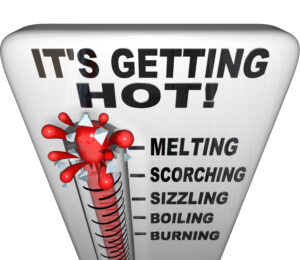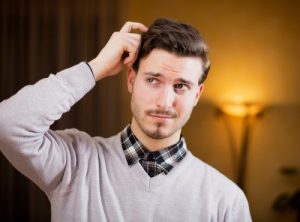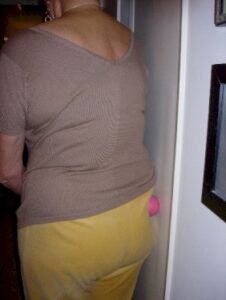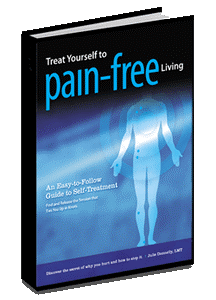What Is Restless Leg Syndrome?
Author: Julie Donnelly, LMT – The Pain Relief Expert
Editor: Dr. Steve Chaney
 July is here and Florida is hot! The “Snowbirds” have gone north to the cooler weather (a goal of mine!) and life is moving in the slow lane.
July is here and Florida is hot! The “Snowbirds” have gone north to the cooler weather (a goal of mine!) and life is moving in the slow lane.
Before I get started talking about our topic for the day, I want to give a big shout-out to one of my clients: Camilla Massa. Camilla is an incredible athlete in a sport called Hyrox. Hyrox isn’t well-known in the USA yet, but it’s very big in Europe. You can think of it as CrossFit on steroids – pure strength and endurance events on an extreme level.
Camilla has grown through the sport and just a few weeks ago she was ranked #15 in the world. Then she went to a Worldwide competition this past week and she came in 1st place! I don’t know where that puts her on the roster, but when you consider she was competing against the best in the sport, she has a lot to be proud of. I’m looking forward to her returning to Sarasota, and to my office for a post-competition therapy session. I want to hear all about the event!
What Is Restless Leg Syndrome?
 Hopefully you aren’t suffering from restless leg syndrome (RLS), but maybe you know someone who is, and if so, this newsletter may be of some help.
Hopefully you aren’t suffering from restless leg syndrome (RLS), but maybe you know someone who is, and if so, this newsletter may be of some help.
It sounds so mild, but clients have told me it’s a really uncomfortable condition that affects the nervous system and muscles. The primary symptom is an unpleasant sensation in the legs that makes a person have an uncontrollable urge to move their legs. Often the legs just jump by themselves, which can make sleeping difficult.
Sufferers report sensations such as itching, tingling, burning, or overall aching. These symptoms are blamed for the overwhelming urge to move their legs.
The sensations associated with RLS are distinct from normal sensations experienced by those who don’t have the disorder, which makes them difficult to characterize. While research hasn’t been able to find any abnormalities in the brain, nerves, or muscles, it is logical that the muscles play a major role in the problem as they are the primary drivers of movement.
The interaction between the muscles and the central nervous system (CNS) is essential for voluntary and involuntary movements. Research suggests that dysfunction in this interaction can contribute to the development of RLS symptoms.
It has been observed that certain muscle-related factors, such as muscle fatigue or excessive tension, can trigger or exacerbate RLS symptoms. Prolonged periods of inactivity, such as sitting for extended periods, can lead to muscle stiffness and reduced blood flow, increasing the likelihood of RLS symptoms occurring.
Treating Restless Leg Syndrome
There are medical treatments that use medications to help relieve the symptoms, but for those solutions I suggest you see your medical practitioner.
I’d like to suggest treating the muscles from your hips to your feet to release any pressure that is being placed on the nerves as they pass through or beside the muscle fibers. I have had success in helping people release the tight muscles in their hips.
Before I share a self-treatment for your hips, I also want to suggest that anyone suffering from RLS also go to a good myofascial release (MFR) massage therapist. MFR will release tension in the fascia, the strong substance that surrounds every muscle fiber in the body.
On to a Julstro self-treatment:

You can treat all the muscles of your hip by placing a ball, such as the Perfect Ball that is on my website, or a tennis ball, on the very outside of your hip.
Lean into a wall and slowly move around until you find a “hot spot.” I call it that because you suddenly come to a point where it really hurts.
Hold pressure on the spot for 15-30 seconds. If you want, you can move back and forth just a little bit to press the acid (H+) out of the muscle.
Then move around until you find another hot spot and repeat the treatment.
Go all the way around your pelvis, along the length of your sacrum, around the top of your thigh bone, and along the crease where your leg meets your trunk.
Go slowly as the muscle takes some time to release the acid from the fibers, which then draws blood into the area and promotes healing in the muscle fibers.
I suggest you also use the heel of your hands and press down on your thigh muscles, sliding from the very top of your leg, like you’re trying to lengthen the muscles toward your knees. If you feel a bump that is painful, that’s a spasm that is putting pressure on your knee and hips. Just do your best to rub it out.
I wish I could say that these will heal the situation, but if it can give you some relief, then that’s a good thing.
If you have any treatments that have worked for you, please let me know so I can share them with others.
Next Month’s Treatment – Headaches
There are many causes of headaches, some life threatening and others that are the end result of tension or other causes that can be resolved. I’ll be sharing a few helpful techniques that have helped a lot of my clients.
Treat Yourself To Pain-Free Living
 You can locate the source of your pain, and then see how to do the Julstro self-treatments that can stop the pain FAST!
You can locate the source of your pain, and then see how to do the Julstro self-treatments that can stop the pain FAST!
Treat Yourself to Pain-Free Living has 21 colorful charts that show you where to treat to relieve pain that you are experiencing, and over 200 clear photos that explain how to do each self-treatment.
You don’t need to live with pain – you can STOP PAIN FAST!
Treat Yourself to Pain-Free Living
Wishing you well,
Julie Donnelly
www.FlexibleAthlete.com
These statements have not been evaluated by the Food and Drug Administration. This information is not intended to diagnose, treat, cure, or prevent any disease.
